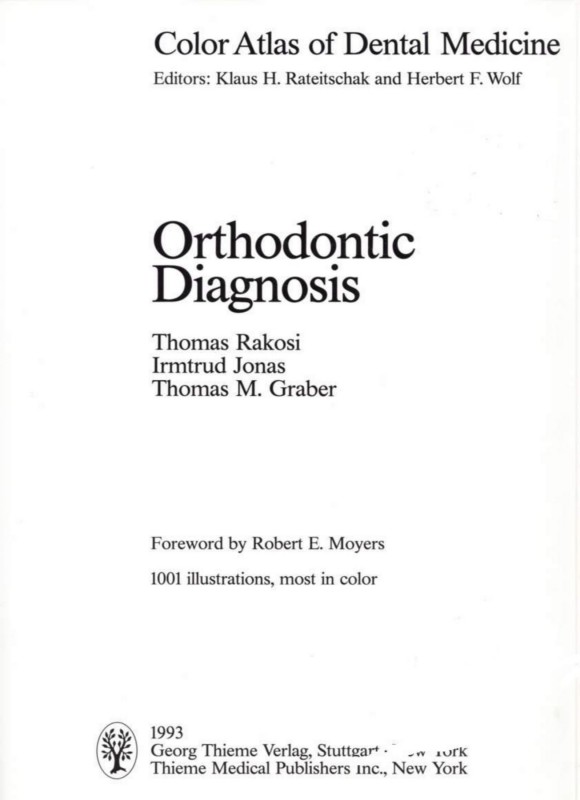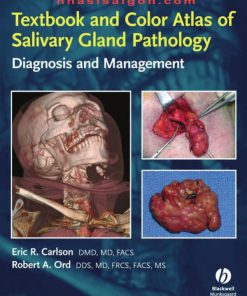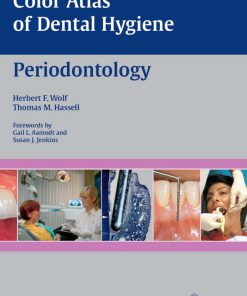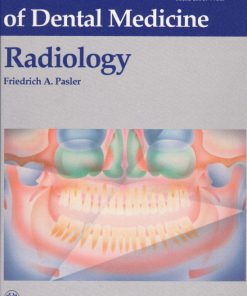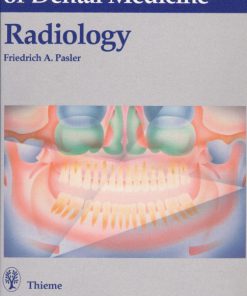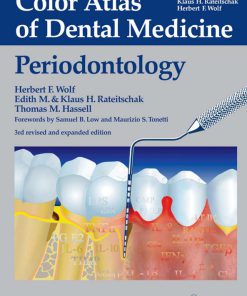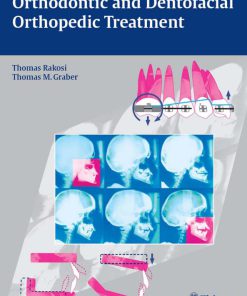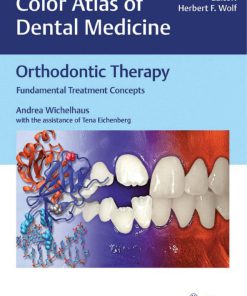Color Atlas of Dental Medicine Orthodontic Diagnosis 1st edition by Robert Moyers, Thomas Rakosi, Irmtrud Jonas, Thomas Graber ISBN 0865774501 9780865774506
$50.00 Original price was: $50.00.$25.00Current price is: $25.00.
Authors:Thieme; 1 edition (January 15, 1993) , Author sort:edition, Thieme; 1 , Published:Published:May 2012
Color Atlas of Dental Medicine- Orthodontic Diagnosis 1st edition by Robert E. Moyers, Thomas Rakosi, Irmtrud Jonas, Thomas M. Graber – Ebook PDF Instant Download/Delivery. 0865774501, 978-0865774506
Full download Color Atlas of Dental Medicine- Orthodontic Diagnosis 1st Edition after payment
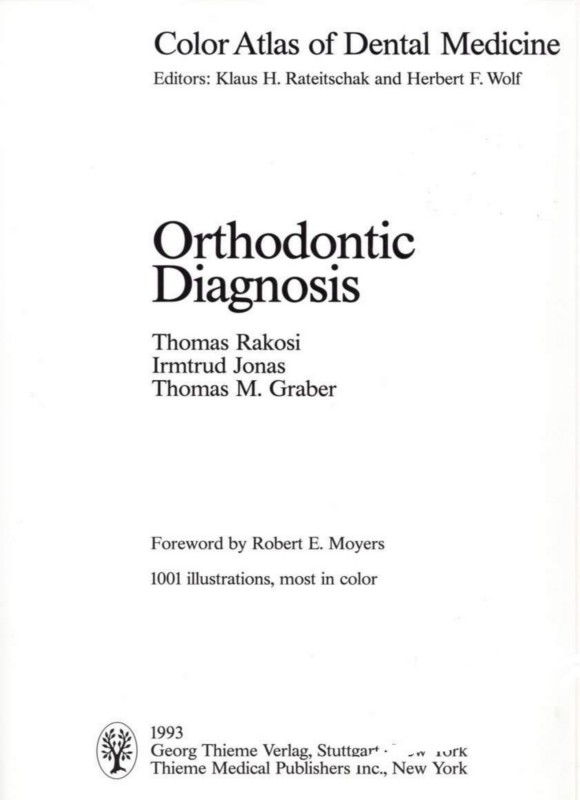
Product details:
ISBN 10: 0865774501
ISBN 13: 978-0865774506
Author: Robert E. Moyers, Thomas Rakosi, Irmtrud Jonas, Thomas M. Graber
An illustrated guide for the complex process of orthodontic diagnostics and indication. The total process of treatment planning including the scientific bases is pictorially described. Beside the conventional methods of examination and model analysis, emphasis is placed on the cranio-facial growth processes, the aetiology of malocclusions and on the importance of functional analysis. The following three aspects are described in detail in this book: Growth of the Facial Skeleton – types of treatment which promote or guide growth. In order to control these natural processes artificially, a precise understanding of them is required. Aetiology of the Malocclusion – the various types of causative therapy and the elimination of the causes. Functional Analysis – many malocclusions are a result of dysfunctions. As a variety of methods are available for treating dysfunctions, functional analysis is taken very seriously.
Color Atlas of Dental Medicine- Orthodontic Diagnosis 1st Table of contents:
-
Introduction to Orthodontic Diagnosis
- Importance of early and accurate diagnosis
- Overview of orthodontic diagnostic procedures
- Role of the orthodontist in interdisciplinary care
-
Clinical Examination in Orthodontics
- Patient history and medical considerations
- Extraoral and intraoral examination
- Assessing facial aesthetics and symmetry
- Dental and skeletal analysis
-
Radiographic Examination
- Importance of radiographs in diagnosis
- Types of radiographs used in orthodontics (cephalometric, panoramic, periapical, CBCT)
- Interpretation of cephalometric radiographs
- Understanding lateral and frontal cephalometric analysis
-
Cephalometric Analysis
- Overview of cephalometric landmarks
- Linear and angular measurements
- Common cephalometric analysis methods (Steiner, Ricketts, McNamara)
- Understanding skeletal, dental, and soft tissue relationships
-
Dental Cast Analysis
- Importance of dental casts in diagnosis
- Evaluating tooth alignment, arch form, and occlusion
- Measuring overbite, overjet, and transverse discrepancies
- Arch length and space analysis
-
Photographic Records in Orthodontics
- Importance of photographs for documentation and assessment
- Standard photographic views: frontal, lateral, and intraoral
- Analyzing facial and dental photographs
- Documenting changes during treatment
-
Malocclusion Classification and Terminology
- Class I, Class II, and Class III malocclusions
- Angle’s classification system
- Subdivisions of malocclusions and variations
- Functional versus skeletal malocclusions
-
Facial Growth and Development
- The influence of craniofacial growth on orthodontic treatment
- Stages of facial growth: prenatal, childhood, adolescence, adulthood
- Evaluating growth patterns and their implications for treatment
- Indicators of abnormal growth
-
Skeletal and Dental Relationships
- The relationship between the maxilla, mandible, and cranial base
- Analyzing skeletal discrepancies: vertical, sagittal, and transverse dimensions
- Dental arch relationships and their implications for occlusion
-
Soft Tissue Analysis
- Evaluating the role of soft tissue in facial aesthetics
- Lip position, chin projection, and nasal analysis
- Soft tissue cephalometric analysis
- Evaluating facial profile and balance
-
Etiology of Malocclusion
- Genetic, environmental, and functional factors
- Impact of habits (thumb-sucking, tongue thrusting) on occlusion
- Understanding the role of trauma and dental development in malocclusion
-
Treatment Planning and Diagnosis
- Integrating diagnostic findings into a comprehensive treatment plan
- Interdisciplinary considerations in treatment planning
- Short-term vs. long-term treatment objectives
- Managing patient expectations and goals
-
Case Presentation and Documentation
- Structuring patient diagnosis and treatment records
- Presenting a comprehensive case for treatment
- The importance of clear communication with patients and specialists
-
Current Trends in Orthodontic Diagnosis
- Advances in diagnostic technology: 3D imaging, CBCT, digital orthodontics
- Role of artificial intelligence and machine learning in diagnosis
- Emerging diagnostic tools and techniques
-
Conclusion
- Summary of the diagnostic process in orthodontics
- The role of accurate diagnosis in successful treatment outcomes
- Future directions in orthodontic diagnosis
People also search for Color Atlas of Dental Medicine- Orthodontic Diagnosis 1st:
color atlas of dental medicine orthodontic diagnosis pdf
color.atlas of dental.medicine endodontology
a color atlas of parasitology
color atlas of common oral diseases 5th edition
atlas of dental anatomy – pdf

